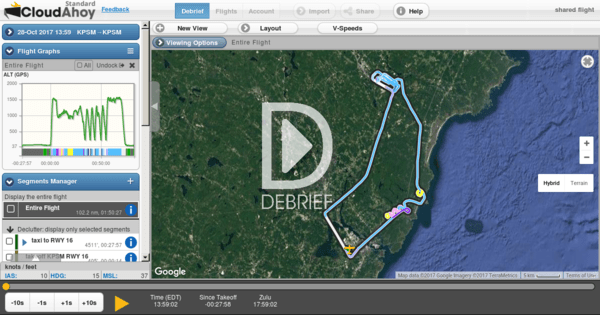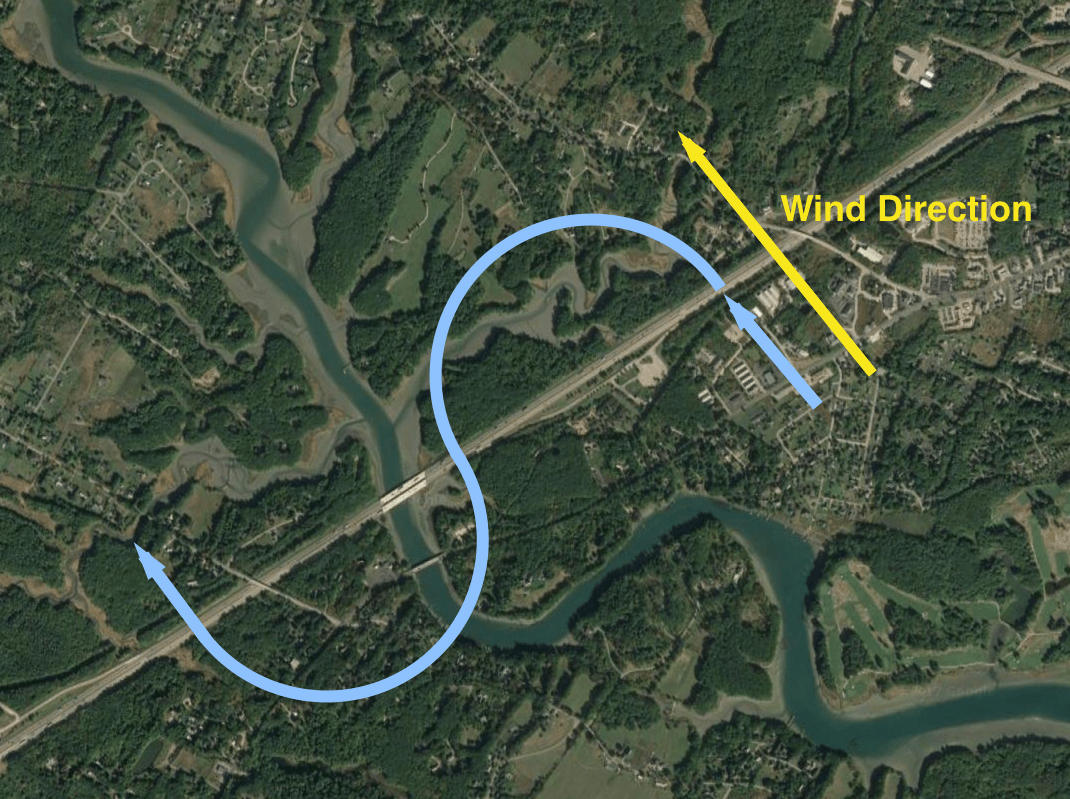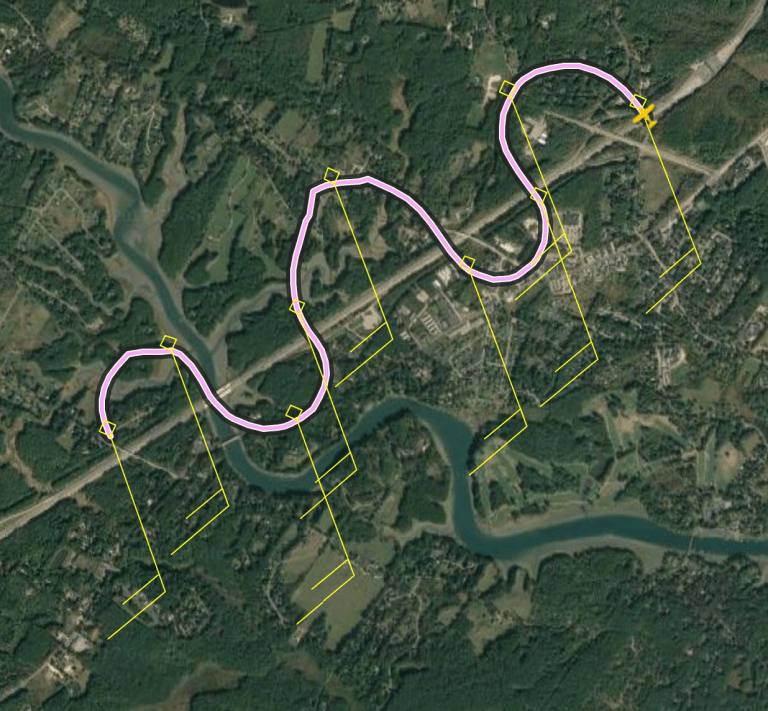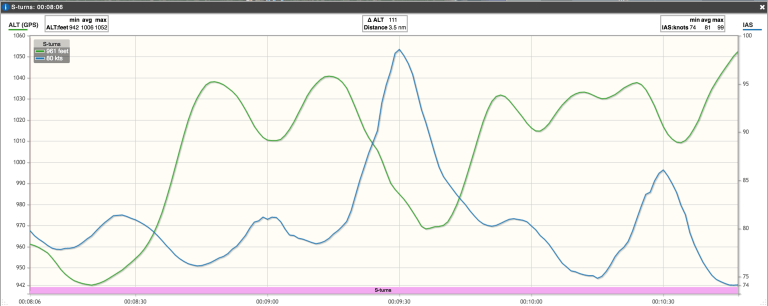
During my lesson on Oct 28, 2017, we spent a bit of time practicing ground reference maneuvers.

My instructor, John, and I took of from KPSM and flew north east toward York, Maine. Once we were far enough out of PSM’s class delta airspace, we started with the first ground reference maneuver: S-turns.
The goal of an S-turn is to fly the aircraft so that its ground track looks like 2 opposite-but-equal half-circles, one on each side of a straight ground reference such as a roadway. Sounds simple, until you start to think about what impact the wind has on ground track, and what adjustments need to be made to attain “opposite-but-equal” as the aircraft’s direction of travel relative to the wind changes.
The maneuver is entered on the downwind; in other words, with the plane flying in the same direction as the wind is blowing. So, before we did anything else, we had to figure out the wind’s direction. The Dynon Skyview EFIS in the RV-12 made it very simple: it depicts the wind’s direction right on the screen. After finding the wind’s direction, we then needed to find a straight ground reference line that a was perpendicular to the wind. Fortunately, there was a stretch of I-95 that fit the bill perfectly.
Here’s an illustration of a “perfect” S-turn, along with the wind’s direction, over the section of I-95 we flew over:

When entering the maneuver, the plane was traveling with the wind and thus had its highest groundspeed. Because this was the “fastest” portion of the maneuver, I needed a relatively steep angle of bank so the plane’s high groundspeed didn’t carry us too far past the road. As we turned through crosswind and into upwind portions of the first half-circle, the plane’s groundspeed started to become slower because instead of flying with the wind, we were flying perpendicular to and then into it. To keep the radius of the ground-track consistent, I reduced the plane’s angle of bank.
The goal was to be wings-level just as we crossed the road after the first half-circle, then immediately roll the opposite direction to begin the second half-circle. The initial portion of the second half-circle was still up-wind, so we had a slower ground speed and used a shallower bank angle. As we transitioned through the crosswind and into the downwind portions of the second half-circle, I had to increase the bank angle to account for the increased ground speed we had flying with the wind.
Here’s the first set of S-turns I did, traveling from north-east to south-west (click here to start debriefing at the beginning of the maneuver):

They don’t quite look like the ideal illustration I provided above. Even with John helping to let me know when I needed to adjust my bank angle, my half-circles aren’t real symmetrical. I had a tough time visualizing the effects of the wind on my ground track while we were flying (Of course, it seems pretty obvious looking at the picture above!).
I was also so focused on trying to have a symmetrical ground track, I wasn’t flying well: my turns weren’t coordinated (you’ll hear John reminding me to use my rudder if you play the debrief), and my airspeed and altitude had some wide fluctuations:

After another set of less-than-stellar S-turns (click here to start debriefing at the beginning of that set), John had me do a some turns around a point, which I’ll write about in an upcoming post.
We then flew up to KSFM for some pattern work (click here to start debriefing at the start of the pattern work). It was a neat experience for me for a couple of different reasons: My in-laws live in Sanford, so I’ve driven by the airport a hundred times but never flown into it. In addition, it was my first time flying a plane from one airport to another; a minor milestone, but a cool one.
It was also my first time flying at an uncontrolled airfield. There were a few other planes in the pattern, and also some glider activity on a crossing runway. Not super-busy, but certainly busy enough!
I have another lesson scheduled for first thing Saturday morning. Hope the weather cooperates; I’m looking forward to practicing my S-turns!
2 Nov 2017 #ground-ref #lesson